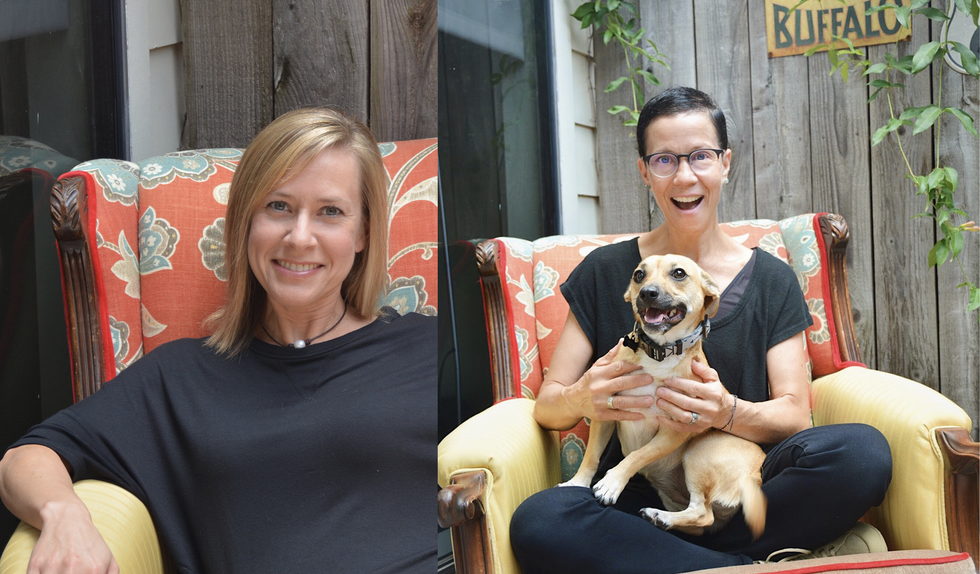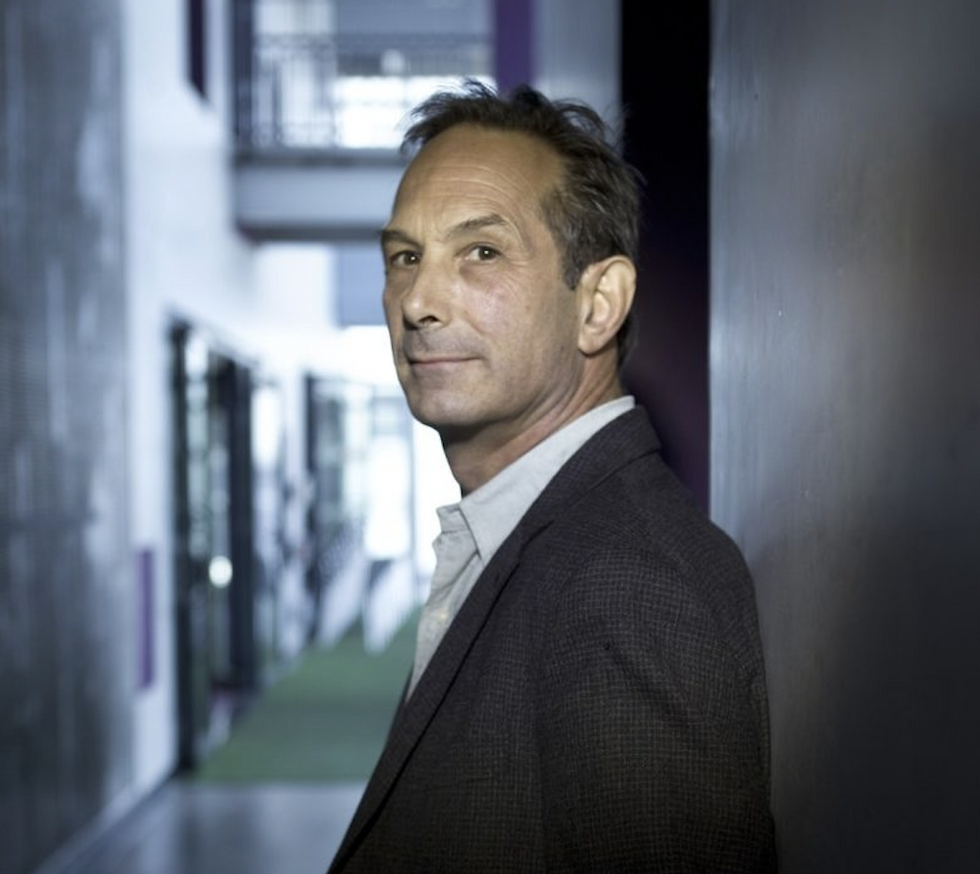Scared Your Company Might Close? These Artists Have Been Through It, And Have Some Advice
One of the most difficult parts of this pandemic is coming to terms with the fact that, not only are almost all artists out of work right now, for some, the work won’t be there any more when the world opens back up: Not all dance companies and businesses will make it through to the other end of this crisis.
Of course, people are doing everything possible to avoid that fate. But fears of folding are, understandably, creating major anxiety right now. To gain some perspective, Dance Magazine spoke to a few people who’ve been through company closures in the past, and proven just how resilient dance artists can be.

Alicia Graf Mack: “My frame of mind was just to keep moving”
In 2004, Alicia Graf Mack had just rejoined Dance Theatre of Harlem after four years off to heal from an injury and an autoimmune disease. But after a weeks-long tour to the UK, then-director Arthur Mitchell shared the news that financial difficulties had forced DTH to go on an indefinite hiatus.
“It was devastating,” says Graf Mack. “I’d worked so hard to regain skills I’d had, to get back on pointe. I wasn’t ready to leave—I felt like I was thriving there. But more than that, it was such a blow to our community. At that time I believe we had at least 40 dancers, who were working at such a high level and were now unemployed.” The announcement dropped in May—after audition season had already passed.
Graf Mack knew she wanted to stay in New York City, and at first auditioned for other ballet companies. “But I realized that I wanted to dance for a company that really wanted me, where I wouldn’t have to fight for my position as a very tall woman of color,” she says.
She reconnected with Complexions Contemporary Ballet, where she’d danced briefly while returning from injury. She also filled in for an injured dancer at Alonzo King LINES Ballet, and took on a couple of commercial projects. “My frame of mind was just to keep moving,” she says. “I tried not to concern myself too much with status or paycheck or exactly what it was I was doing. I tried to be brave enough to throw myself into situations that were scary.”
Soon, she got a call from Alvin Ailey American Dance Theater. She had initially made a connection to the company years earlier, through taking Horton class at Steps on Broadway with company teacher Milton Myers.
“I had done a good job in setting up a network, and also establishing a reputation as someone who seems open and is deemed humble and easy to work with,” she says, adding that those qualities are especially important for dancers right now.
As difficult as it was, DTH’s hiatus helped spur Graf Mack’s second career path: After retiring from Ailey six seasons later, she got her master’s degree in nonprofit management. “When DTH folded, it didn’t make sense to me how we were seeming to thrive onstage and yet financially there was a different reality,” she explains. “I wanted a better sense of how to run an arts organization.”
Today, she is putting all of her experiences to use as director of dance at Juilliard.
“Not that I would encourage a dancer to completely change paths right now, but I do think this is a time where we can expand and learn about ourselves in a different way,” she says. “Maybe a dancer has a passion for graphic design, or website development. As I always tell my students, You’re prepared—the skills that you have as a dancer are going to make you successful. And if the opportunity is not there, you can create it.”

Alana Campbell, Courtesy Hope Stone
Jane Weiner and Amy Pearl: “It allowed us to focus on what was most meaningful”
After 10 years of running Hope Stone Studio, in 2014, artistic director Jane Weiner and executive director Amy Pearl realized the business model was never going to make ends meet. Although the school was a beloved hub for Houston’s modern dance community, with only one studio, it never had the capacity to turn the kind of profit it needed to be sustainable.
“We didn’t want it to sink the whole nonprofit,” says Pearl. “It was really painful, but we had to be smart.”
They closed the school and pruned the business down to just two parts: a return to a project-based version of Hope Stone Dance, the company, and The Hope Project, its arts education outreach program in schools. The budget decreased by 85 percent, and everyone was laid off, except for Weiner herself.
“I think I cried for three days straight,” admits Weiner. “I felt like I’d failed everyone.”
But she soon learned that “failure” can have unexpected benefits. As Weiner regrouped, she began to realize that without the expenses of a physical space, the business was able to refocus on its mission: Making a real impact in the community through dance. “We’d gotten to a point where we were so big that it felt heavy; we couldn’t move,” she says.
Weiner slowly expanded the number of schools The Hope Project reached and began choreographing again once new works could be fully supported with funding. As the organization’s workload increased, she gradually re-hired Pearl.
Today, The Hope Project employs 30 teaching artists working in 11 community partner schools/organizations. And Weiner takes her time to create new work on the company, rather than presenting a regular season.
The directors have learned to remain nimble—a quality that’s helped prepare them for today’s challenges. Right now, they’re creating scenario budgets for the months ahead, but are prepared to pivot as necessary. “It’s gut–wrenching when things aren’t on your terms,” says Pearl. “But losing work during this crisis isn’t your fault. And it doesn’t mean the business model won’t work six months, or a year, or two years from now.”
Weiner knows that many are now experiencing exactly what they went through six years ago. As hard as it was at the time, she says the closure brought surprising clarity: “It allowed us to focus on what was most meaningful for us.”

Jon Bond: “I went into major survival mode”
The dancers at Cedar Lake Contemporary Ballet never imagined the company would shut its doors. “The environment seemed financially stable, and its founder was very vocal about her love for dance and the artists,” says Jon Bond, who performed there for eight years. But in 2015, that founder surprised everyone and decided to pull the plug.
“I went into major survival mode: I went straight to Dallas BBQ, ordered a Texas-size Frozen Royale, a side of Angry Shrimp and got to putting together and sending out my portfolio,” says Bond.
Earlier in his career, he’d had dreams of moving abroad, but had grown comfortable simply dancing the works of European choreographers at Cedar Lake. Now that the company was closing, Bond took a chance and reached out to Nederlands Dans Theater. “What’s the worst that could happen?” he told himself. “Either they will never respond, or they will respond saying that they aren’t interested.” He admits that his stomach shook with nerves before pressing the send button. But just two months after Cedar Lake’s final show, he was dancing with NDT.
“Looking back it was the best thing to happen for my career,” Bond says of the closure. “Living in NYC, I was so wrapped up in the hustle and grind of the city. My life functioned around rehearsing and performing, while simultaneously teaching and choreographing during off-hours or free periods. In the Netherlands, the work ethic is also unreal, but the mindset is much more relaxed and focused without the distractions of big-city life.”
He’s grateful for the artists he’s met at NDT who’ve shared different outlooks on what “good dance” is, and where it’s headed. And he relishes the chance to work with creators of iconic roles in the NDT legacy.
He suggests dancers find a way to stay hopeful right now. “Hope has the ability to create an opportunity for a new beginning, way of life, or way of working,” he says. “It can inspire dancers to explore other avenues both inside and outside of the dance studio.”

Robert Swinston: “We had closure”
Robert Swinston devoted decades of his career to the Merce Cunningham Dance Company—he joined in 1980, and became assistant to the choreographer in 1992. Then in June 2009, Cunningham announced that, following his death, the company would embark on a two-year international tour, then disband.
“The decision had come as a result of an arduous process that was done with careful consideration with considerable input,” says Swinston. “We knew that it was a historic action, as we were the first dance company to prematurely announce its closure.”
The very next month, each of the company members visited Cunningham privately in his apartment before a tour to Jacob’s Pillow. “After our final show there, on our drive back to New York, during a thunderstorm, Merce passed away,” says Swinston.
The next 29 months were filled with 134 performances that made up the Legacy Tour. “By the end on New Year’s Eve at the Park Avenue Armory, we were exhausted and spent, but had celebrated Merce in the way he might have enjoyed,” says Swinston. “We had closure.”
Swinston was part of the team that transitioned the Cunningham Dance Foundation to the Merce Cunningham Trust, which today licenses Cunningham works and holds classes. But he also started a new chapter for his career: In 2013 he became artistic director of the Centre national de danse contemporaine (CNDC) in Angers, France, one of the country’s national choreography centers. “It has been a new life, and an awakening culturally,” he says. CNDC assists emerging choreographers and companies, programs dance and does outreach. Swinston also created his own dance company, CNDC Angers/Robert Swinston, which performs Cunningham’s work as well as his own choreography.
Now, he’s looking at another final bow: Next month, he’s turning 70, and will retire and shut down CNDC Angers/Robert Swinston.
His advice for those facing possible closures right now? “With all its ambiguity, I would tell them what Merce said to me: ‘Find a way to go on.’ ”

Chanel DaSilva: “I felt like I was being buried. But really I was being planted”
Chanel DaSilva danced with the Trey McIntyre Project through all six years that it was a full-time company. So, when, in December 2013, McIntyre announced the company’s final show would be held the following summer, she had to ask herself some hard questions.
“My identity was so wrapped up in being a Trey McIntyre Project dancer,” she says. “It forced me to figure out who I was without that.”
After TMP closed, she danced with Lar Lubovitch for a while, and got hired for small gigs here and there. But despite “auditioning massively,” she wasn’t dancing nearly as much as she wanted to be. “It was shattering for me. 2015 was a rock bottom emotional year,” she admits. “I felt like I was being buried. But really I was being planted.”
The lack of performing opportunities forced her to question her relationship to dance. “When you’re in a company, a lot of things are decided for you,” she explains. “I had to start defining what my life was going to be, and ask myself, Who am I if I’m not onstage every night? Who is Chanel and what is her contribution to the world?”
Later that year, DaSilva launched MOVE|NYC| with her longtime friend Nigel Campbell. The multi-part training and mentorship program helps teens from parts of New York City with fewer resources to launch their dance careers. DaSilva also started choreographing.
“That year pushed me to a new place,” she says. “Now that I’m no longer dancing, I have time to create. I feel emboldened to say something and offer my perspective. And leave something in the world that matters.”
Although the current crisis has made her anxious and stressed just like everyone else, she believes her reaction has been tempered by her past experience. “I’ve learned to lean into change and creative possibilities,” she says. “I don’t want dance as we know it to change. I don’t want to lose the thrill of live theater! But life may not look like how I thought it was going to, and I’m trying to stay flexible.” Now, she’s figuring out how she can create new work over Zoom, and discovering what she might be able to turn into a dance film.
She suggests embracing this new reality: “Both in yourself and in your organization, lean into innovation. There might be something you never thought of before sitting underneath your nose and now that’s an asset that can keep you sustainable in the future.”
DaSilva still celebrates the “awesome six years” she danced with TMP even as she misses them. She holds onto words of advice from McIntyre: “Just because something ends, that doesn’t discount the beauty of it.”




